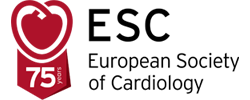Malignant arterial hypertension was historically treated with surgical thoracolumbar splanchnicectomy, a type of sympathectomy treatment that was introduced in 1938. “A significant reduction in blood pressure response was observed in at least half of the patients who underwent splanchnicectomy,” said Mr Franzen. “But the treatment led to severe adverse events such as orthostatic hypotension, anhidrosis and intestinal disturbances. After the discovery of effective antihypertensive drugs, splanchnicectomy became neglected and disregarded over time.”
In 2009 the concept of sympathectomy was reintroduced with intravasal catheter-based percutaneous renal sympathetic denervation (RDN) used in patients suffering from resistant arterial hypertension. Recent publications have shown that RDN significantly lowers systolic and diastolic peripheral brachial blood pressure by 32/12 mmHg after 6 months.
Mr Franzen said: “RDN with radiofrequency energy has several important advantages over surgical splanchnicectomy: it is a minimally invasive procedure without significant systematic side effects, it is well tolerated, and recovery times are short.”
Arterial hypertension can irrevocably harm blood vessels in the short and long term, subsequently leading to increased aortic/arterial stiffness and arteriosclerosis. “Since central aortic pressures and arterial stiffness are much better predictors for future cardiovascular events than peripheral pressures we focused the present study on the effects of RDN on central hemodynamics and arterial stiffness,” said Mr Franzen.
The researchers studied 21 patients with therapy resistant hypertension (61.9% men; mean age 64 years; 5.0±1.3 antihypertensive drugs) and 6 controls (83.3% men; mean age 57 years; 4.3±2.3 antihypertensive drugs). The inclusion criteria were: (i) use of >3 antihypertensive drugs, (ii) peripheral blood pressure at baseline =150 mmHg, and (iii) exclusion of secondary hypertension and anatomical abnormalities of the renal arteries.
RDN was performed with an RDN radiofrequency ablation catheter system (1). Central hemodynamics and arterial stiffness, i.e. pulse wave velocity (PWV), were recorded with an Arteriograph device (2). Measurements were performed at baseline, and 3 and 6 months after the intervention.
RDN led to an improvement in all parameters compared to baseline. Peripheral systolic blood pressure improved by 7.6% (145 mmHg versus 156 mmHg, p<0.05) after 3 months and by 5.4% (148 mmHg versus 156 mmHg, p<0.05) after 6 months. Central systolic blood pressure improved by 9.5% (147 mmHg versus 161 mmHg, p<0.01) after 3 months and by 6.6% (151 mmHg versus 161 mmHg, p<0.05) after 6 months. Most importantly, PWV improved significantly, both at 3 months (9.4±1.2 m/s versus 10.9±1.8 m/s, p<0.01) and 6 months (9.7±1.8 m/s versus 10.9±1.8 m/s, p<0.01). Univariate analysis of variance (f-test) showed that the improvement of PWV was, at least in part, blood pressure independent.
In controls no significant changes in blood pressure values or PWV were observed.
“Besides peripheral blood pressures, RDN improved central blood pressures and arterial stiffness, i.e. PWV,” said Mr Franzen. “According to age adjusted reference values, the improvement of approximately 1m/s PWV observed in our study could be interpreted as a blood vessel rejuvenation of almost 10 years. This suggests that RDN might be a fountain of youth for blood vessels in patients with therapy resistant hypertension.”
He added: “Further studies are needed to determine whether the benefits of RDN translate into a reduced risk of cardiovascular events.”
ENDS
Reference
1Ardian™
2TensioMed®ENDS

 Our mission: To reduce the burden of cardiovascular disease.
Our mission: To reduce the burden of cardiovascular disease.